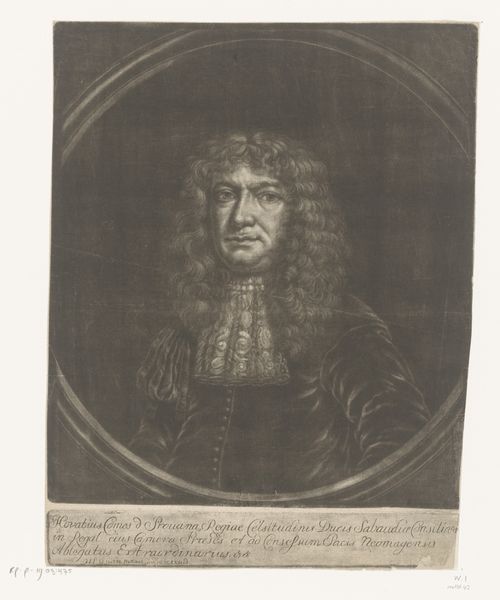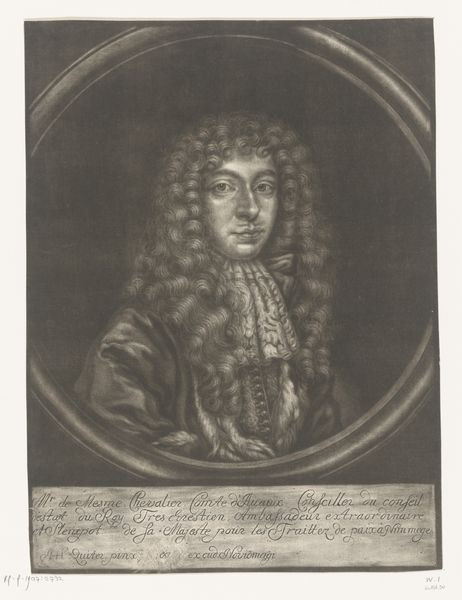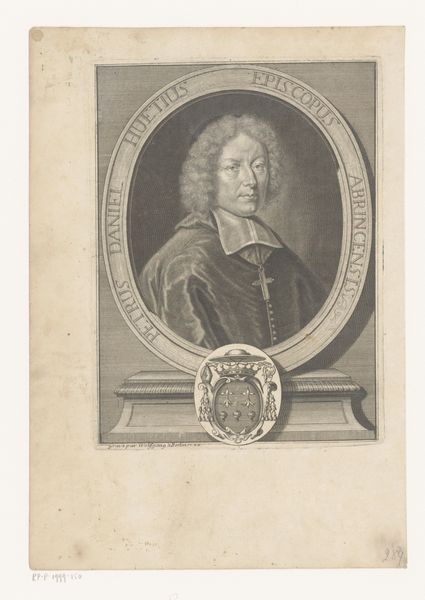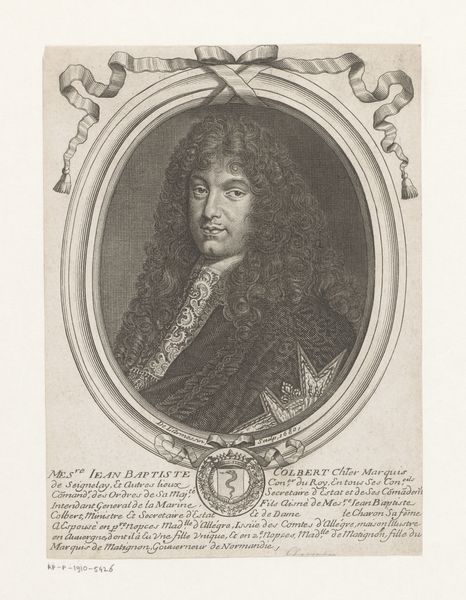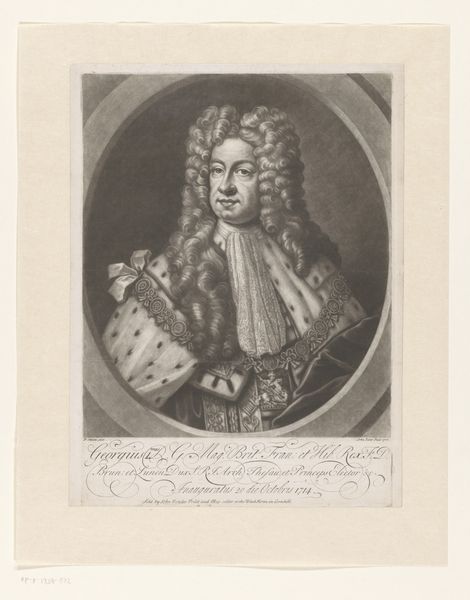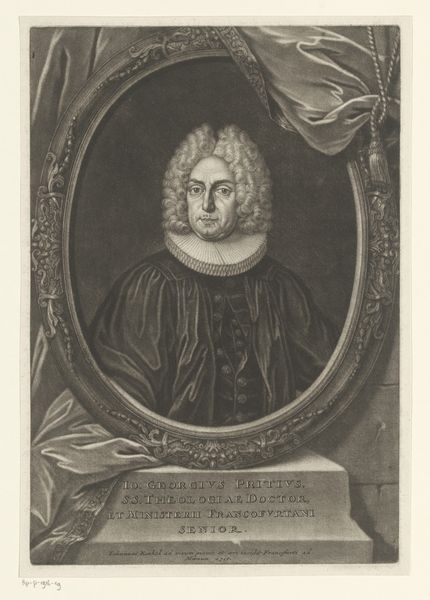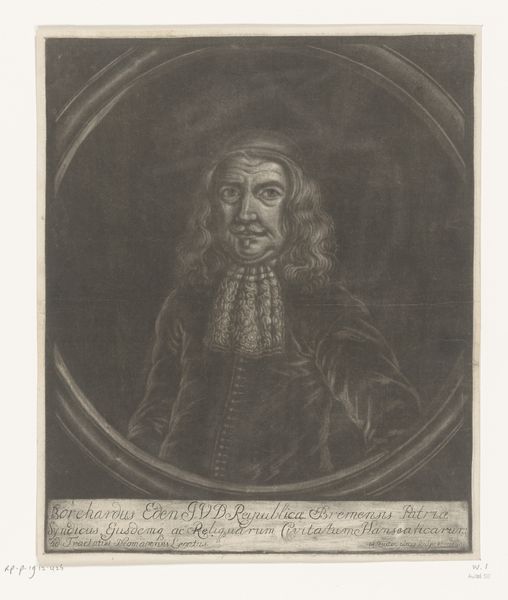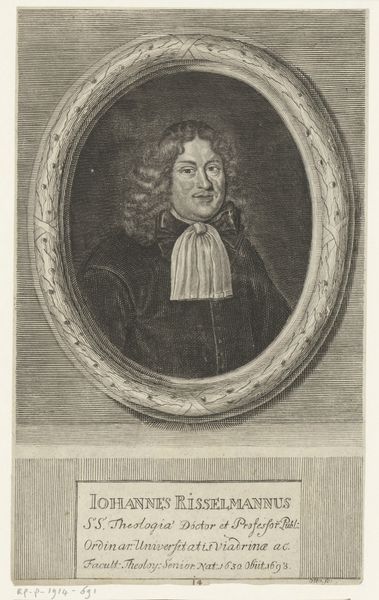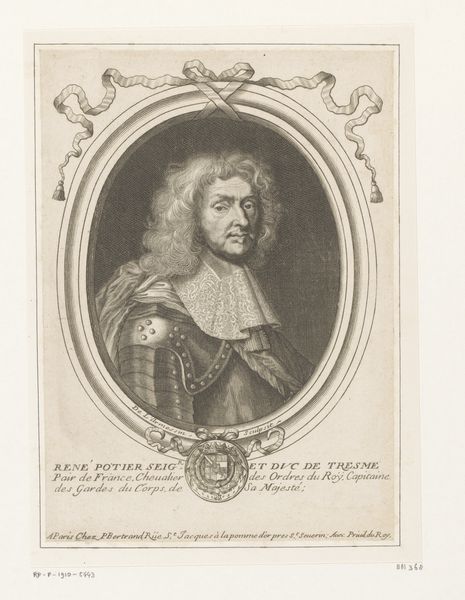
print, metal, engraving
#
portrait
#
baroque
# print
#
metal
#
pencil drawing
#
history-painting
#
engraving
Dimensions: height 335 mm, width 252 mm
Copyright: Rijks Museum: Open Domain
Editor: This is a fascinating print titled "Portret van Lorenz Christoph von Somnitz," made in 1679 by Herman Hendrik Quiter, using metal and engraving. I find it really captivating – almost stoic in its presentation, despite the baroque style. What social context was influencing the creation of portraiture in this period? Curator: The Baroque period witnessed a flourishing of portraiture as a tool for projecting power and status. Prints, like this engraving, made such imagery accessible to a wider audience. Consider, what did it mean for a person, Lorenz Christoph von Somnitz in this case, to commission and disseminate his likeness? What statement was he trying to make in society? Editor: I see. So it's less about personal expression and more about publicly affirming his position? The sash and the elaborate lace collar certainly add to the impression of wealth and authority. It also has text, so was this more of a commemorative piece? Curator: Precisely. These images actively shaped the way elites were perceived and remembered. Think of the mechanics of image circulation: Who would have been the intended audience, and where would such a print be displayed or stored? This speaks volumes about its intended purpose and its role in solidifying a specific historical narrative. Consider the symbolic significance embedded within it. Editor: So, even a portrait like this is participating in a larger power structure, reinforcing social hierarchies. I never thought of art that way before, almost like propaganda in a way. Curator: It's not exactly propaganda, but you're on the right track! These kinds of images, supported by institutional patronage, helped shape public perception. It underscores the critical role that museums and collections play in maintaining these power dynamics. What has surprised you the most about this piece? Editor: Definitely thinking about how art functions within broader social and political structures, not just aesthetic value. Thanks for shedding some light! Curator: My pleasure. Reflecting on art's role within such social systems helps deepen our comprehension of these artistic eras and the individuals portrayed.
Comments
No comments
Be the first to comment and join the conversation on the ultimate creative platform.
